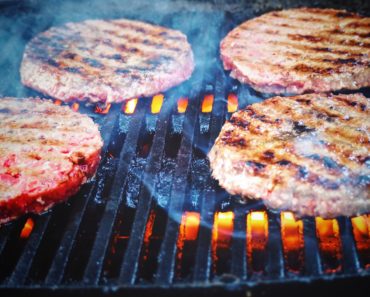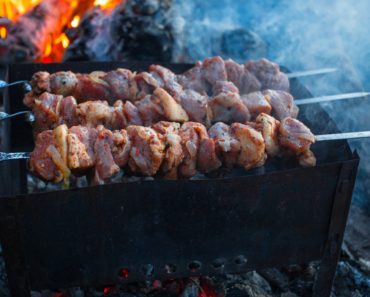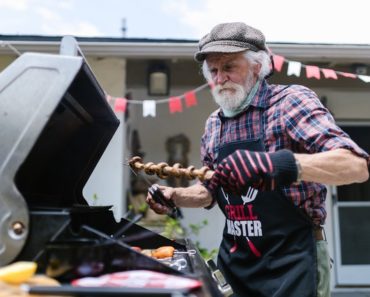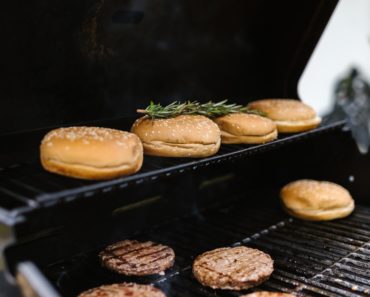Charcoal vs gas grill
Which is the best grill for you? That depends on your needs and preferences. Some people prefer charcoal grills because of the smoky flavor they add to food, while others prefer gas grills because they are more convenient and easier to use. No matter which type of grill you choose, be sure to research the different brands and models available to find the one that best suits your needs.
What is a charcoal?
-A charcoal grill is an open-air cooking device that consists of a fire bowl or fire pot, with one or two handles, along with vents for airflow. Charcoal grills can be either round or square in shape and are made from materials such as bricks, cement blocks, metal wire mesh, ceramic briquettes, galvanized sheet metal or large terracotta pots.
Features of a charcoal
Size:
-Round charcoal grills typically measure between 26 and 30 inches in diameter, while square grills are about 24 inches on each side.
Price:
-Charcoal grills range in price from $15 for small portable models up to several hundred dollars for high-end, heavy-duty commercial models.
Design:
-The legs of a charcoal grill may or may not come with the product, depending on whether it has an attached stand. These grills are designed to be placed on any level surface.
Style:
-Charcoal grills are available in both round and square designs.
Warranty:
-Most charcoal grills come with a one-year warranty.
Customer Service:
-Reputable companies will offer toll-free customer service lines.
Consumer satisfaction:
-Charcoal grills currently have an average consumer rating of 4.5 stars out of five stars, based on more than 1,300 reviews at Amazon
Material:
-Charcoal grills are made from a variety of materials, including bricks, cement blocks, metal wire mesh, ceramic briquettes, galvanized sheet metal or large terracotta pots.
Fuel:
Charcoal is the main fuel source for charcoal grills.
Ease of use:
-Charcoal grills are easy to use and don’t require any electricity.
Convenience:
-Charcoal grills can be used for both direct and indirect cooking, which allows for more flexibility in terms of what you can cook.
Temperature control:
-With a little practice, you can easily control the temperature on a charcoal grill by regulating the air intake.
Flavor:
-The smoky flavor that charcoals add to food is a big draw for many people.
Cleanup:
-Charcoal grills can be a little messy to clean, but it’s not difficult once you get the hang of it.
Types of food that can be cooked:
-Because charcoal grills are designed for indirect cooking, they are perfect for smoking meats and fish. They can also be used to cook vegetables, pizzas, pastas, and other foods.
Heat-up time:
-It takes about 20 to 30 minutes for a charcoal grill to reach cooking temperature.
Tips:
–Before lighting your charcoal grill, make sure you have all the necessary tools and utensils on hand so that when the coals are hot, you can begin grilling quickly. It’s also important to let the grill heat up properly before cooking.
Setup time:
-Once the grill is set up and preheated, you should be able to start cooking within 20 minutes.
Additional features:
-Charcoal grills can be used as smokers or for direct and indirect heat cooking.
Affordability:
-Charcoal grills are generally more affordable than gas grills.
Maintenance:
-Charcoal grills require periodic cleaning and maintenance, such as replacing the charcoal and ashes.
Portability:
-Many charcoal grills come with a carrying case or bag, which makes them easy to take with you on camping trips or picnics.
Safety:
-When using a charcoal grill, be sure to always keep a close eye on the fire and never leave it unattended.
Temperature Range:
-Most charcoal grills allow you to reach cooking temperatures between 350- and 450-degrees Fahrenheit.
Cost of fuel:
-One bag of charcoal will typically last a little over an hour on a medium-sized grill. A 20lb bag of briquettes costs between $8 and $10, making a 20-pound bag good for approximately 10 hours of grilling time.
Burners:
-Charcoal grills do not have any built-in heat sources – they only provide a cooking surface – so they don’t feature gas burners or electric coils.
Burn time:
-A 20lb bag of charcoal will typically last about an hour on a medium-sized grill.
Capacity:
-Charcoal grills are available in sizes ranging from 18 inches to 142 inches, with the most popular size being 36 inches.
Maintenance:
-Charcoal grills require regular cleaning, such as replacing the charcoal and ashes.
Accessories:
-Many charcoal grills come with additional features, such as a built-in thermometer or a rotisserie attachment.
Environmental impact:
-When compared to propane grills, charcoal grills produce more CO emissions and burn cleaner.
Skills needed for this task:
-You should know how to properly light and extinguish a charcoal grill, as well as perform regular maintenance.
Cleaning:
-Charcoal grills can be a little messy to clean, but it’s not difficult once you get the hang of it.
Safety precautions:
-You should never leave the grill unattended – always be present when it is on – and keep your face and hands away from the heat source. When lighting charcoal grills, you need to use caution since combustible materials such as gasoline or lighter fluid can ruin the flavor of your food. It’s also important to monitor the fire for safety reasons, so you may want to invest in a thermometer that attaches to the side of the grill.
What is a gas grill?
-A gas grill is a cooking appliance that uses natural gas or propane as a fuel source. Natural gas grills require an existing natural gas line to be connected to the grill, while propane tanks can easily be attached or detached from the grill. As opposed to charcoal grills, which use coals or lumps of wood as a heat source, and therefore don’t need any outside ventilation systems, gas grills must have their own exhaust system installed for proper ventilation.
Features of a gas grill
Size:
-Gas grills vary in size and dimensions and measure between 24 and 36 inches long by 24 inches wide by 30 inches high.
Price:
-Gas grills range in price from $100 for small portable models up to several thousand dollars for commercial-grade grills.
Style:
-Gas grills are available in both freestanding and built-in designs.
Warranty:
-Most gas grills come with a one-year warranty.
Consumer satisfaction:
-Gas grills currently have an average consumer rating of 4.5 stars out of five stars, based on more than 1,200 reviews at Amazon
Fuel:
-Natural gas or propane are the two main fuel sources for gas grills.
Ease of use:
-Gas grills are easy to use and don’t require any electricity.
Convenience:
-Gas grills can be used for both direct and indirect cooking, which allows for more flexibility in terms of what you can cook.
Temperature control:
-With a little practice, you can easily control the temperature on a gas grill by regulating the amount of fuel that is used.
Flavor:
-The flavor that gas grills add to food is a big draw for many people.
Cleanup:
-Gas grills are easy to clean and don’t leave any residue or ashes behind.
Types of food that can be cooked:
-Because gas grills are designed for direct cooking, they are perfect for cooking meats and fish. They can also be used to cook vegetables, pizzas, pastas, and other foods.
Heat-up time:
-It takes about 10 to 15 minutes for a gas grill to reach cooking temperature.
Setup time:
-Once the grill is set up and preheated, you should be able to start cooking within 5 minutes.
Portability:
-Many gas grills come with a carrying case or bag, which makes them easy to take with you on camping trips or picnics.
Safely
-When using a gas grill, be sure to always keep a close eye on the fire and never leave it unattended.
Temperature Range:
-Gas grills can reach cooking temperatures of up to 650 degrees Fahrenheit.
Cost of fuel:
-You will need to spend between $15 and $20 on a new gas grill tank annually.
Burners:
-Most gas grills have at least two burners, but larger models may have up to six.
Burn time:
-One tank of propane in a standard-sized grill will typically last about an hour.
Capacity:
-Standard-sized gas grills typically have cooking surfaces that range from 180 to 480 square inches.
Accessories:
-Most gas grills come with the necessary hardware and tools for proper setup.
Environmental impact:
-The environmental impact of a gas grill depends on where you live and the source of the natural gas that is used to fuel it.
Maintenance:
-Gas grills are easy to maintain and usually only require an annual cleaning.
Skills needed for this task:
-You will need basic knowledge of how to use utensils including tongs, forks, spatulas, and gloves. You’ll also need some cooking knowledge to properly assess when food is done cooking before it gets cold or burned. A good understanding of personal safety precautions is essential as well if you intend on working with fire or hot surfaces during your cooking process. Keep in mind that using a gas grill can come with some risk and it’s always important to be prepared in case of an emergency.
Cleaning:
-All parts should be washed with hot, soapy water before and after each use.
Safety precautions:
-Be sure to keep a fire extinguisher on hand when using a gas grill and never leave it unattended.
Pros and Cons of charcoal and gas grill?
-Gas grills are typically more expensive than charcoal or electric models. Because they use propane tanks to power the grill itself, gas grills can take up a lot of space. Portable units often have attached propane tanks that cannot be detached from the grill itself. In contrast, electric and charcoal models don’t have any attached hardware that can’t easily be removed from the main unit. It’s also difficult to achieve desired cooking results with a gas grill quickly because it’s much harder to control how much fuel is being used without precise temperature control. Charcoal models require added preparation time because you must first light the briquettes before beginning your cooking process. The biggest advantage of using a charcoal model is that there is no limit to how much food you can grill. Because propane tanks are attached to gas grills, it’s often difficult to cook large amounts of food at once. You must be very careful not to run out of fuel while cooking or you risk ruining your meat and potentially increasing the likelihood that harmful carcinogens will be produced because of an incomplete burn.
The similarities of charcoal and gas grill?
The two types of grills have several similarities, including:
– Both can be used to cook a wide variety of foods.
– Both are easy to clean.
– Neither type requires electricity to operate.
– Both produce heat that can grill food.
– The cost of a charcoal or gas grill is relatively comparable.
The differences of charcoal and gas grill smoker?
-Compared to charcoal grills, gas grills are better at achieving desired cooking results quickly because the heat is easily controlled. Gas grills also take up less space than their charcoal counterparts, but they’re more expensive and require an outdoor natural gas line (for larger commercial-grade models) or propane tanks (for smaller portable units). Charcoal grills can be cheaper than gas grills and are usually easier to assemble. While both types of grills may take some practice to master, it’s easy to achieve desired results with a gas grill thanks to the precise control over the amount of fuel used. The biggest downside of using a charcoal grill over a gas grill is that you might have trouble cooking food in windy conditions because it can blow ash from the charcoal briquettes.
The Winner:
-Both gas and charcoal grills have their pros and cons, but if you’re going to invest in a grill for your home, it’s typically best to go with a gas model. In terms of price, both types of grills are comparable. Gas grills take up less space than charcoal models and are easier to use because they can achieve desired cooking results quickly.
FAQs
What is the primary difference between a charcoal and gas grill smoker?
While both charcoal and gas grills can be used to smoke food, the advantage of using a gas grill is that you have more control over how much fuel you use at any given time. Without precise control, it’s difficult to regulate the amount of heat generated by charcoal.
Which smoker is right for me?
If you’re limited on space, a gas grill is usually the best option. Gas grills are easier to transport than charcoal models and are often more affordable. A charcoal grill provides a better cooking experience for beginners because it can be challenging to learn how much fuel to use over time without burning your food.
Pros and Cons of a charcoal and gas grill smoker?
Charcoal pros:
-Can be cheaper than gas grills.
-Requires no additional preparation once briquettes are lit (unlike some gas units).
Charcoal cons:
– You have less control over cooking temperature. – It’s difficult to cook large amounts of food at once because it’s hard to regulate the quantity of charcoal being used during the cooking process. – Food tastes better with a propane grill due to the lack of ash particles produced by charcoal grills. – You must wait for coals to achieve desired cooking temperatures, which can take up to an hour for larger grills.
Gas pros:
-Provides more precise control over cooking ability thanks to enhanced temperature regulation options.
-Generally easier to use than a charcoal grill.
-Can be used in windy conditions without fear of ashes being blown everywhere.
– More expensive than charcoal grills.
– Takes up more space than a charcoal grill.
– Not all gas grills can be used for smoking food.
– You must have an outdoor natural gas line (for larger commercial-grade models) or propane tanks (for smaller portable units) to use a gas grill.
– Some gas grills can be difficult to clean.
Gas cons:
– Can produce a chemical taste if not cleaned properly.
– Can be more dangerous than charcoal grills if not used correctly.
Conclusion:
When choosing a charcoal or gas grill, it’s important to consider your budget as well as the amount of space you have available. In terms of price, both types of grills are typically comparable. However, if you’re able to sacrifice some flavor for convenience, it’s best to invest in a gas grill over a charcoal model. Gas grills take up less space and provide more control than their charcoal counterparts do, and they can also be used in windy conditions without fear of ashes being blown everywhere.






